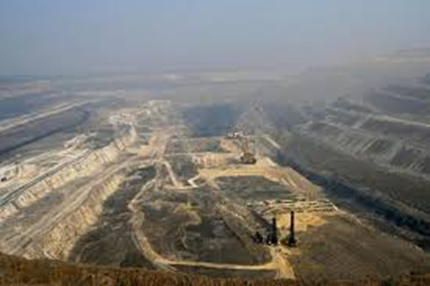- Courses
- GS Full Course 1 Year
- GS Full Course 2 Year
- GS Full Course 3 Year
- GS Full Course Till Selection
- Online Program
- GS Recorded Course
- NCERT (Recorded 500+ Hours)
- Polity Recorded Course
- Geography Recorded Course
- Economy Recorded Course
- AMAC Recorded Course
- Modern India, Post Independence & World History
- Environment Recoded Course
- Governance Recoded Course
- Science & Tech. Recoded Course
- International Relations and Internal Security Recorded Course
- Disaster Management Module Course
- Ethics Recoded Course
- Essay Recoded Course
- Current Affairs Recoded Course
- CSAT
- 5 LAYERED ARJUNA Mentorship
- Public Administration Optional
- ABOUT US
- OUR TOPPERS
- TEST SERIES
- FREE STUDY MATERIAL
- VIDEOS
- CONTACT US
Lithium Discovery in Karnataka and Its Implications
Lithium Discovery in Karnataka and Its Implications
29-07-2024

Discovery of Lithium Resources in Karnataka:
The Atomic Minerals Directorate for Exploration and Research (AMD) has discovered 1,600 tonnes of lithium resources in the Marlagalla area of Mandya district, Karnataka. This significant find was announced by Union Minister of State for Science and Technology, Jitendra Singh, in a written reply to an unstarred question in the Rajya Sabha. Lithium is a crucial component in rechargeable batteries used in electric vehicles (EVs) and energy storage systems, making this discovery important for India's renewable energy sector.
AMD's Exploration Activities
- Karnataka: Apart from the discovery in Mandya, the AMD has conducted preliminary surveys and limited subsurface exploration in the Yadgiri district to estimate lithium resources.
- Other States: The AMD is actively exploring potential geological domains in parts of Korba district, Chhattisgarh, and has identified major mica belts in Rajasthan, Bihar, and Andhra Pradesh, along with pegmatite belts in Odisha, Chhattisgarh, and Karnataka, as prospective areas for lithium resources.
- Himachal Pradesh: A preliminary survey by the AMD has identified surface uranium occurrence in the Masanbal area of Hamirpur district. However, the Atomic Energy Commission has not conducted any study to establish an atomic energy plant in Himachal Pradesh.
Small Modular Reactors (SMRs):
- In response to developments in small modular reactors, the minister informed the Rajya Sabha that the Department of Atomic Energy is studying various technologies and designs from different countries and foreign-based vendors. However, there is currently no proposal to collaborate with foreign vendors or countries.
- Although no private player has shown interest in producing small modular reactors, some have expressed interest in deploying small reactors at their captive sites.
- Additionally, the Government of India and the Government of the Russian Federation have expressed interest in expanding cooperation in the use of nuclear energy for peaceful purposes, including small modular reactors.
About Lithium:
Lithium is a chemical element with the symbol Li and atomic number 3. Classified as an alkali metal, it is a soft, white, lustrous solid at room temperature. It is highly reactive and does not occur as the metal in nature but is found combined in small amounts in nearly all igneous rocks and in the waters of many mineral springs. Major minerals containing lithium include spodumene, petalite, lepidolite, and amblygonite.
- Major Reserves: Lithium reserves are concentrated in the lithium triangle in South America – Argentina, Bolivia, and Chile, with 50% of the deposits concentrated in these regions.
- Production: In 2023, Australia was the world leader in terms of lithium mine production, with Chile and China ranked second and third.
- Uses: Lithium has numerous applications, with the most important being in rechargeable batteries for mobile phones, laptops, digital cameras, and electric vehicles. It is also used in non-rechargeable batteries, alloys, special glasses, drugs, hydrogen storage, and air conditioning systems.
Alkali Metals:
Alkali metals are the six different chemical elements found in the first column of the periodic table: lithium (Li), sodium (Na), potassium (K), rubidium (Rb), cesium (Cs), and francium (Fr). They are soft metals that are highly reactive with water and oxygen, have a silver-like shine, and are great conductors of heat and light.
Implications of Lithium Discovery in Karnataka:
The discovery of lithium resources in Karnataka has several implications for India:
- Energy Independence: The discovery can help India reduce its dependence on imports for lithium, which is crucial for its electric vehicle and energy storage goals.
- Renewable Energy Transition: It supports India's commitment to increasing the share of renewable energy in its total energy mix.
- Economic Benefits: Domestic production of lithium can lead to cost savings and create job opportunities in the mining and processing sectors.
- Technological Advancements: The discovery may encourage further research and development in lithium extraction, processing, and battery technologies in India.
Must Check: Best IAS Coaching In Delhi
UPSC Prelims Result 2024 Out: Expected Cut Off & Other Details, UPSC Prelims 2024 Answer with Explanation, Daily Prelims Quiz, Daily Current Affairs, MONTHLY CURRENT AFFAIRS TOTAL (CAT) MAGAZINE, Best IAS Coaching Institute in Karol Bagh, Best IAS Coaching Institute in Delhi, Daily Mains Question Answer Practice, ENSURE IAS UPSC Toppers, UPSC Toppers Marksheet, Previous Year Interview Questions, UPSC Syllabus




